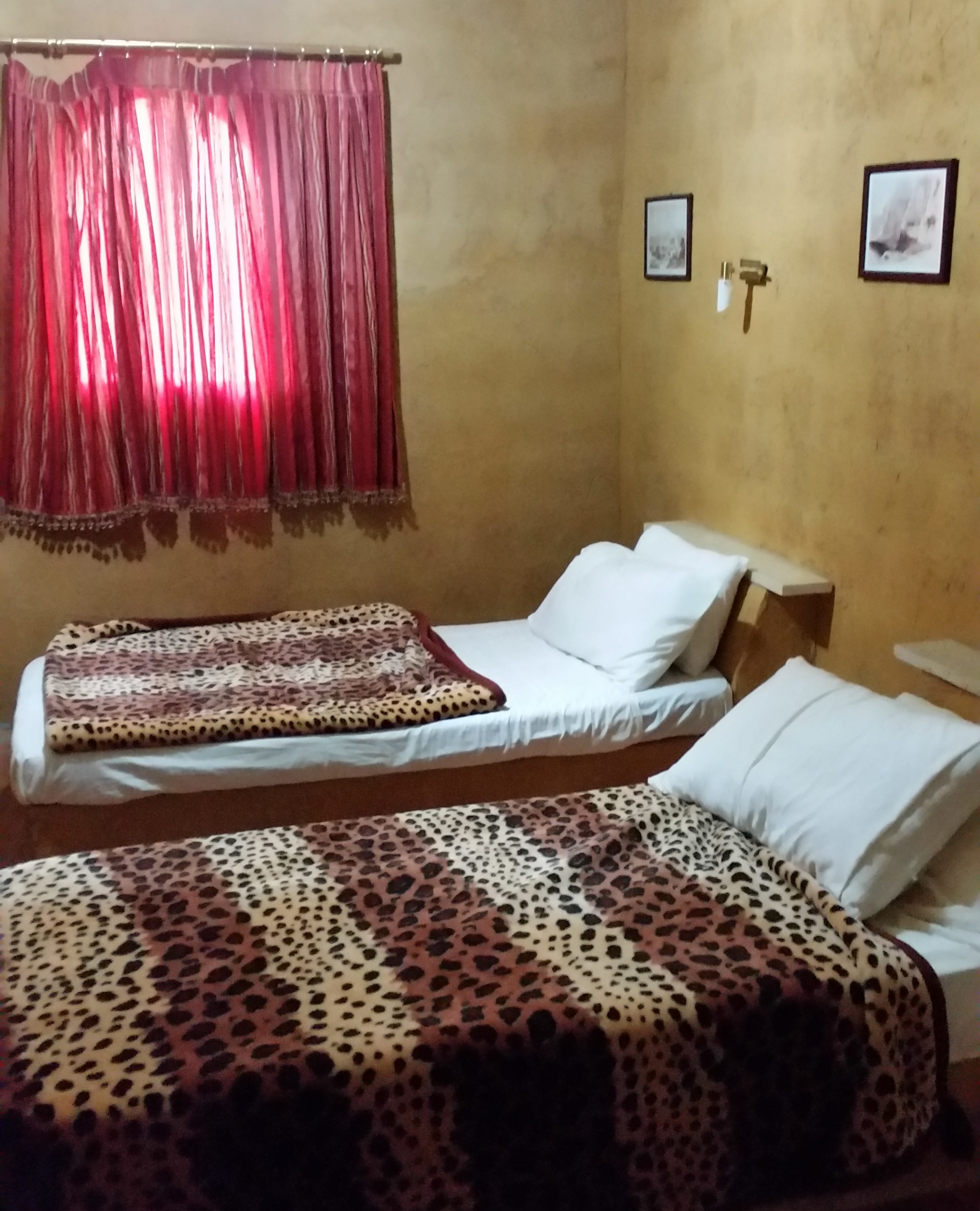
Wadi Rum
Zaid tried to give us more information about his native country as we drove from Petra to Wadi Rum this afternoon, but finally gave up when he realized that most of his audience was asleep. We didn’t feel too bad about closing our eyes because there wasn’t much to see in the bleak desert landscape anyway.

Off-road “Jeeps”

Enjoying the ride

Riding in the dune buggies
Everyone perked up as Jim pointed out Beit Ali, the tent camp where we would return to spend the night, and then when the fantastic rock formations of Wadi Rum began to rise out of the desert floor. If you’ve seen The Martian (which we haven’t yet), you have seen this eerie landscape because the film was shot here.
Hani pulled the bus into a wide open area where four off-road vehicles were waiting to ferry us across the sand. Although the locals referred to these as “Jeeps,” only one of the four actually had come off a Jeep production line (many, many decades ago), and all of them had multiple replacement parts of uncertain provenance. We can assure you that absolutely no one fell asleep during this leg of today’s journey.

Ancient grafitti

The Bedouin camp

Bedouin tent

Our Bedouin host
The first of our off-road desert destinations was a genuine Bedouin camp, the home of one of Zaid and Jim’s many local acquaintances. A few goat-hair tents had been set up in the sand at the foot of a red-rock mountain; about halfway up, we could see a tree that indicated the presence of a spring. The young man’s extended family, a community of about sixty-five people, live mostly off the goats, sheep, and camels that they raise (supplemented with revenue from the occasional tourist group). Presumably, the livestock are able to forage enough from the sparse vegetation around the spring to supply their keepers with the milk, meat, wool, and hides they need to survive.

Main room of the Bedouin tent
The tent we were invited to visit was large enough to easily accommodate our group of twenty-one, seated around the perimeter. The only furnishings were some woolen mats and cushions; a few rustic tools were lined up in the corners. The Bedouins graciously offered each of us a wrapped cookie as Zaid described their daily activities and translated their answers to our questions.
When a woman from our group asked where they did their cooking, she and the other women were invited to look into the women’s tent—no men allowed. The clan’s matriarch and her teenage daughter showed us a charred metal pan about the size of a trash can lid sitting on the ground; that was their stove. We saw no table, no cooking pots, no utensils, no dishes—nothing. Indeed, the women’s tent appeared to be completely empty, even though it was nearly as big as the communal one. Those of us who can’t imagine trying to prepare meals without a food processor and a microwave—let alone a refrigerator—could only marvel.
After thanking our Bedouin hosts for their hospitality, we again took off across the desert toward another spring that flows through a narrow gorge decorated with ancient Nabataean graffiti.

Hiking toward the gorge

Into the gorge to see some ancient grafitti

Pictures of people carved into the walls

Looking out the gorge

Olive tree splitting a rock

Playing in the sand dunes
After that, our off-road transport took us to an area where we could climb up and then surf down a giant sand dune. As they waited for the Americans to finish romping in the sand, our native drivers cranked up their radios and began to dance; Michael and Mark grabbed a hand and joined in.
But the sun was getting very low in the sky, so we climbed back into our vehicles and headed to the Beit Ali Tourist Camp.

The mountains around Wadi Rum blaze in the sunset

Dramatic sunset in Wadi Rum

Beit Ali Tourist Camp

Our “chalet”

Inside the chalet
We had been told that we might be spending the night in tents, but as it turned out, everyone in our group was assigned to Beit Ali’s “chalets,” which, unlike the tents, have en suite bathrooms. Get those images of A-frame mountain cabins out of your minds: these chalets are more like the kind of rustic motel rooms one might have found along Route 66 in New Mexico back in the 1950s. The first thing we noticed about ours was that none of the light fixtures worked except one dim bulb over the shower. After a couple of maintenance men replaced all the bulbs in the bedroom, only one more fixture began to shed light, but we decided that that would do. Fortunately, the wall-mounted air conditioner works just fine. The beds (three twins; maybe we should call them triplets?) are fixed concrete platforms topped with foam pads and shaggy, leopard-print blankets: odd, but not uncomfortable.
Once again, dinner was an assortment of hot and cold vegetables, rice, potatoes, and roasted meats served buffet-style from a big stone serving station in the middle of the round dining room. Many of the other diners were seated on cushions at low tables, but our group gravitated toward the standard tables and chairs on the mezzanine. Tonight’s tahini was particularly yummy, and there was a new type of dessert: sticky squares of dense yellow cake sweetened with date honey. The Mariah Carey background music was a little incongruous; the mood was more authentic outside, where the moon was rising over the palm trees as we walked back to our little chalet and stretched out on our foam-topped concrete slabs for a well-deserved rest.
Leave A Comment